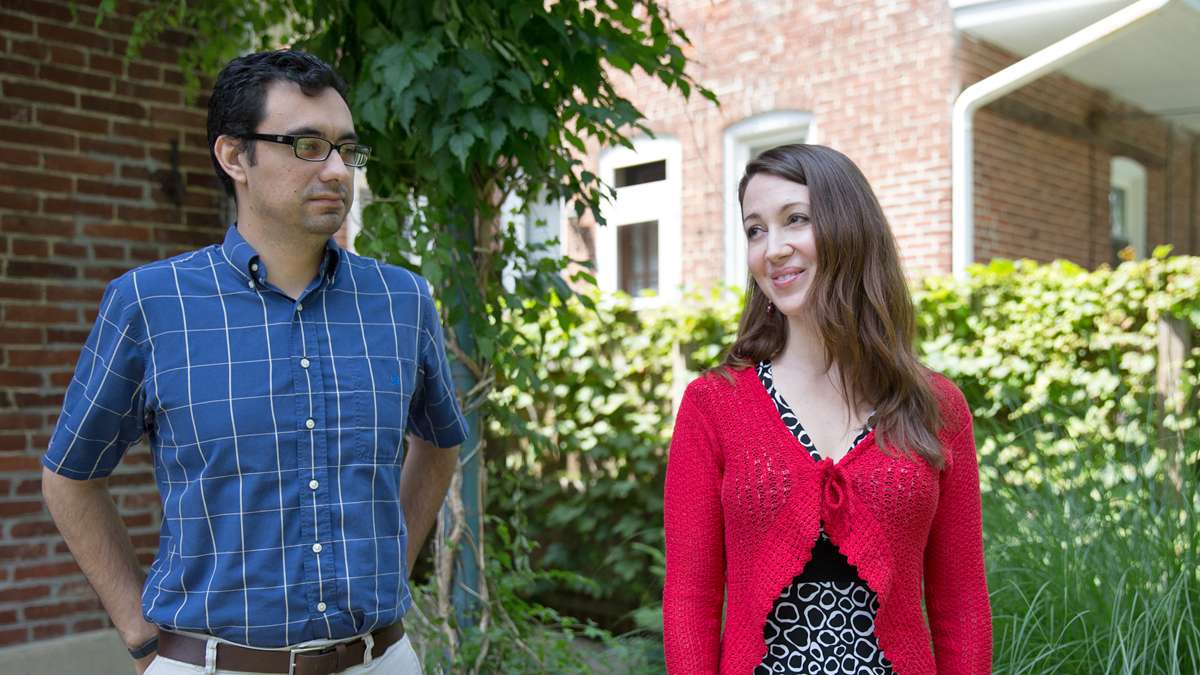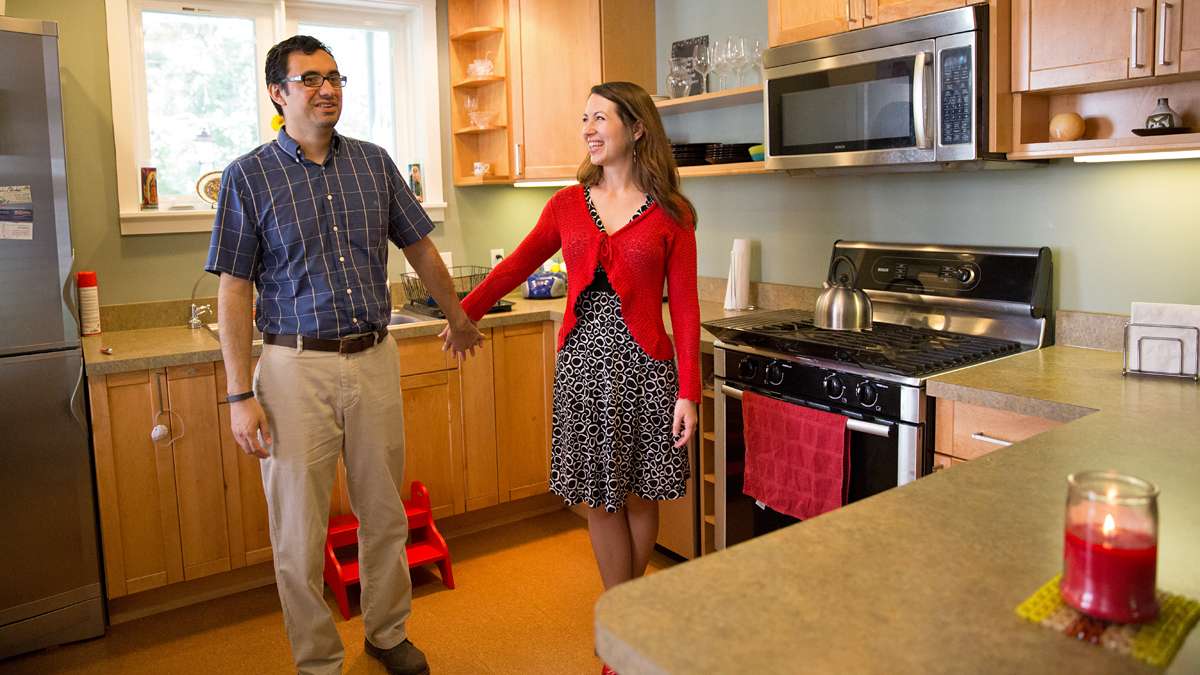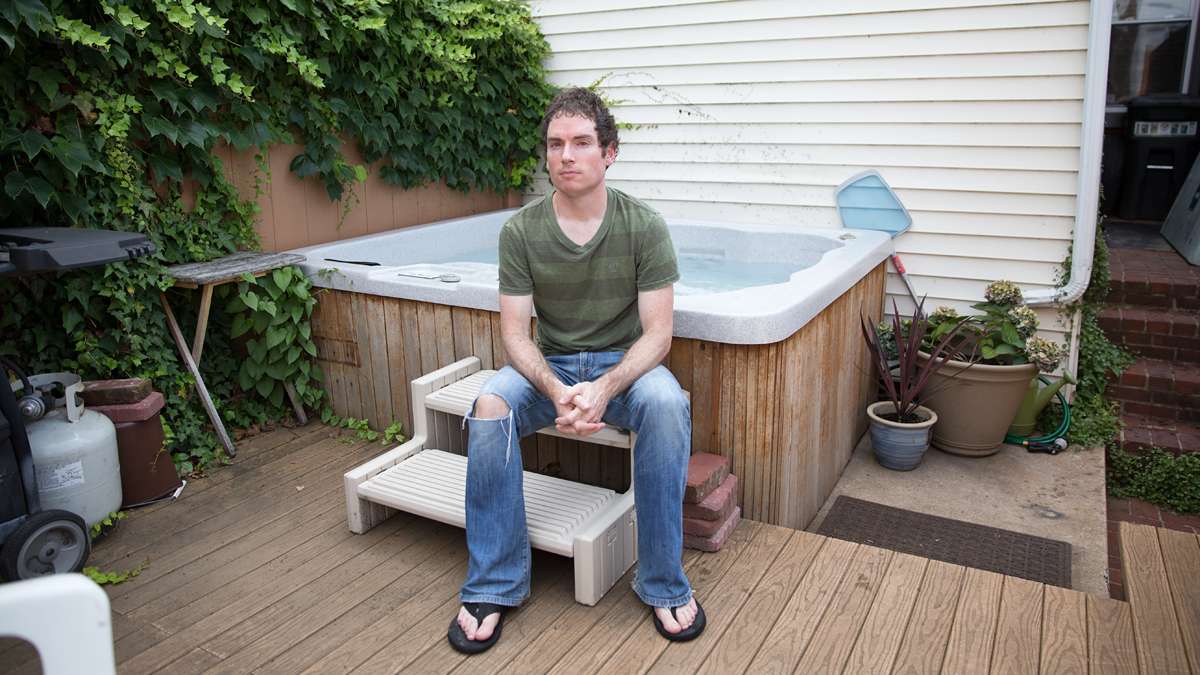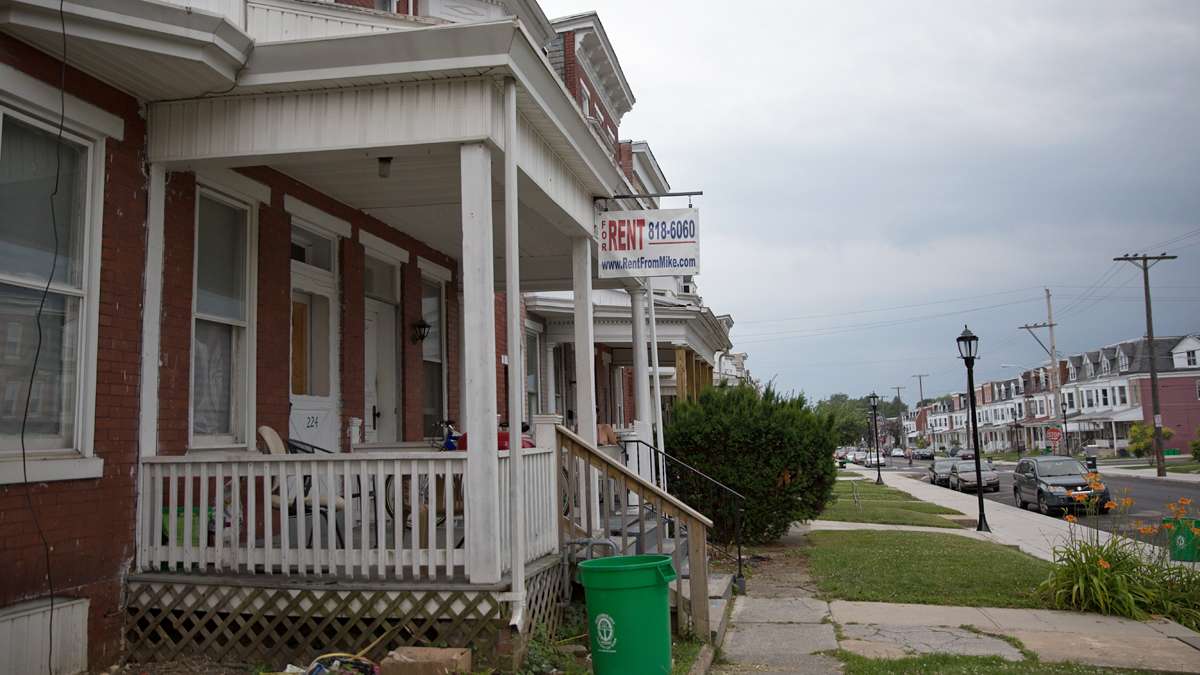Companies offer cash to help workers buy homes
ListenKaylee Swanson is about to become a homeowner.
It’s at least a year ahead of schedule for the 27-year-old and her boyfriend.
“We’re kind of just tired of paying rent, and wanted something to call our own,” Swanson explains after an early evening run near her soon-to-be neighborhood in York.
And it would’ve been tough to pass up the three-bedroom brick townhouse in a leafy neighborhood that’s quiet – but not too quiet – and close to the Rail Trail, where Swanson can run and walk their beagle.
Student debt, stagnant wages and tight credit have delayed many millennials’ entry into the housing market, but Swanson had some help from her employer.
Swanson is director of sales for the York Revolution baseball team, one of four companies in the city to launch an employer-assisted housing program within the past six weeks and at least a dozen statewide working on doing the same.
Philadelphia, Lancaster, Bethlehem, Scranton and other cities in Pennsylvania and nationwide already have similar programs in place, some for as long as 50 years.
Reading Health System started one this year.
Pinnacle Health is launching one soon in Harrisburg, where the local government avoided bankruptcy – but continues to run on fumes.
And economic development experts in Chester are revamping their programs.
Particularly given the hesitancy of millennials to enter the housing market, the incentives could be effective recruitment tools that also trap disposable income in some of the Commonwealth’s poorest towns.
Motivation varies
Sometimes the primary goal of these programs is community revitalization. More often, it’s recruitment and retention.
But in most cases, the catch is the same:
Qualifying workers must buy within a designated geographic area, whether it’s an entire city or particular neighborhood. And they have to repay their employer if they move or leave the job within an established timeframe – typically, about five years.
Swanson says that’s not a problem.
“I grew up near Cleveland, so I don’t really get phased by things that other people would get kind of worried about, I guess.”
Like York, Cleveland isn’t immune from at least some of the typial urban afflictions – declining tax base, dwindling population, rising crime and crumbling infrastructure – facing cities everywhere. Harrisburg, Chester, Scranton, Detroit.
The York Revolution’s owner Eric Menzer says the program grew in part from his frustration with the slow pace and lackluster results of many government-advanced solutions to those problems.
“Private businesses need to play their part in doing what they can while we continue to advocate for the political class to care about these issues and do something about it,” Menzer says.
Dearth of data
Menzer also says he’s counting on a 10-to-20-fold return on his investment, mainly from reduced turnover.
But what are those expectations based on, exactly?
Housing experts lament the lack of data on program outcomes.
Las Vegas-based realtor Dawn Lane says that presents a problem for companies that want to start offering housing assistance to workers.
She’s advised many of them through her Hope Home Foundation.
“That’s the one thing I get asked, and one of the obstacles. You go somewhere, and they want to know: What are the results?” Lane says.
Christopher Waters had the same sorts of questions when he started working for the Philadelphia Urban Affairs Coalition at its Home Buy Now program manager.
“There aren’t that many studies out there regarding something like this,” Waters says. “What’s the benefit to everybody? What’s the benefit to the employee? What’s the benefit to the employer? What’s the benefit to the city, what’s the benefit to the neighborhood, what’s the benefit to the city of Philadelphia? To be honest with you, that’s what I found missing.”
Waters now is analyzing how nearly 350 employer-assisted home purchases facilitated by the coalition have affected vacancy rates, property values, tax revenues and ownership tenure in Philadelphia.
He won’t finish his research until the end of this year. But so far, his expectations – which were high to start – have been exceeded.
Waters says people might not crunch the numbers because benefits often are obvious.
Bob Astor, spokesman for Shipley Energy, says it seems logical for private businesses that want to the health of their host city, and recruitment.
“Housing is your largest expense. If we can help offset some of that, then that may be a thing to tip the scale in our favor, if they’re looking at our company versus another company,” Astor says.
It would cost Shipley nearly $4 million if every worker takes advantage of the $10,000 incentive York home purchase program rolled out shortly after the Revolution’s announcement in May.
Astor says the company is good for it.
Some experts say these initiatives simply fight the market.
York Mayor Kim Bracey sees that happening in her city.
Alumni and staff from York College of Pennsylvania can get up to $5,000 if they buy their first house in the neighborhood adjacent to campus.
But only five have taken advantage during the past decade.
“While we were trying to transform and revitalize housing back to single-family home ownership, the landlords coming in, scooping up the properties,” Bracey says.
The college hasn’t responded to requests for information about the target neighborhood, but Bracey says changes are in progress.
Bracey says she would advocate expanding the college’s program and a similar one offered by WellSpan hospital.
The hospital hasn’t provided information in response to requests during the past six weeks for program details.
New and improved?
Lane says York’s new programs promise more favorable outcomes.
First, employer housing incentives can be most effective where there’s demand for affordability, according to Lane.
Housing costs are affordable (meaning spending no more than 30 percent of one’s income) for the majority of renters (Reading) owners (Philadelphia, Pittsburgh, Erie, Altoona, Bethlehem, Allentown, Chester, Lancaster, Harrisburg, Lebanon) or both groups (Scranton, Williamsport) in all but two of Pennsylvania’s 15 most populous cities, according to a Keystone Crossroads analysis of Census data.
The exceptions are York and Easton.
Housing is affordable for just 47 percent of renters and 45 percent of owners in Easton; in York, its 42 percent and 48 percent, respectively, according to U.S. Census data.
That suggests a particularly strong demand, Lane says.
York’s employers also are offering incentives with twice as much purchasing power as those offered previously in the city – and elsewhere, according to Lane.
York College, for example, limits its incentive $5,000 for staff and alumni who buy their first house in the neighborhood adjacent to campus.
The new programs are citywide.
Some experts prefer a targeted approach; otherwise, benefits are diluted.
“You end up with an extra consumer or two in random areas,” says Dan Hoffman, a consultant who’s advised employer-assisted housing programs in Baltimore, Chicago and Philadelhpia.
But York is a fraction of 5.2 square miles. That’s about the size of the neighborhood targeted by Detroit’s Live Midtown initiative through which four universities and hospital systems are, with the help of financing partners, subsidizing downpayments, improvements and rents (extremely rare) for qualifying employees.
York’s new programs also have a benefit ceiling of $10,000, which is 12 percent of the area’s $83,000 median home value.
Lane says between 3 and 8 percent of the purchase price is typical.
Other Pennsylvania cities offer the equivalent of between 2 and 10 percent of median home values within their respective markets, according to an analysis by Keystone Crossroads of programs and Census data.
Lancaster General Hospital offers $10,000, too.
That doesn’t go quite as far in the stronger housing market, but is still equivalent to nearly 10 percent of the area’s $102,600 median home value.
The hospital’s program started as a recruiting tool in 2006, when there was a nursing shortage, according to its director of real estate Pat Doherty.
That’s no longer the case, but Doherty says the program will continue for the foreseeable future.
Their incentive only applies in one neighborhood in Lancaster adjacent to another section of the city where Franklin & Marshall College offers the same benefit.
The hospital used the college’s program, which started in 1998, as a model, Doherty says.
About the outcome
Bracey says success, to her, would be a city where the majority of homes are owner-occupied.
Currently, 55 percent are rentals.
And it’s been that way since she was economic development director more than a decade ago.
“It’s pretty much remaining stagnant, and I don’t know that that’s a bad thing, but if I could just get 1 percent up, then I know I’m going in the right direction,” Bracey says.
York Mayor Bracey also figures that people want good schools, safe neighborhoods and clean streets.
And a higher homeownership rate would mean progress on all those fronts.
WHYY is your source for fact-based, in-depth journalism and information. As a nonprofit organization, we rely on financial support from readers like you. Please give today.



















